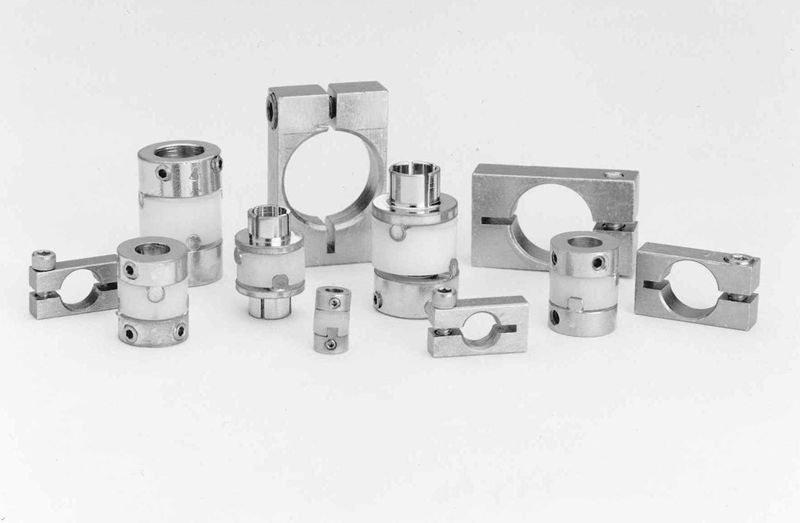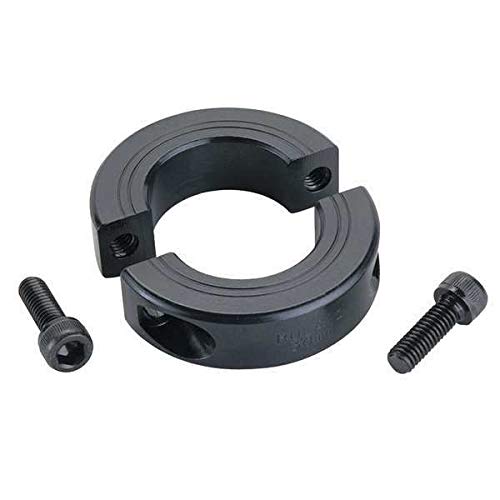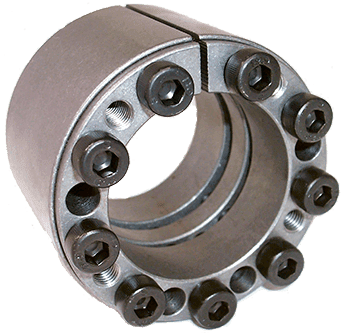Product Description
Cross Coupling cable protectors are well-engineered to safely convey and efficiently secure virtually any configuration of control lines or cables into or out of well-bores. More then 1000 types of Cross Coupling cable protectors were custom made and developed for a wide range of tubing(coupling) type & sizes, cable types & sizes. Material and design will be custom made CZPT the projects’ requirements.
APPLICATIONS
• ESP cable
• Subsurface safety valves control line
• Chemical injection line
• Permanent Gauges
• Intelligent Wells
• Fiber Optic
• Coiled tubing
DESIGN FEATURES and OUR ADVANTAGES
• Streamlined design and beautiful structure
• Tubing sizes from 2 3/8″ O.D. to 7″ O.D.
• Fast action for design and short lead time
• Separate channels for flat, round, or square cables and control lines in 1 cross coupling protector
• Material of Cast steel, Stainless Steel, Duplex Stainless Steel are available
• One piece assembly with no loose fittings.
• Galvanized coating or Electrophoretic paint for maximum rust protection
• Custom-made CZPT request
| Certification: | ISO 9001:2000 |
|---|---|
| Surface Treatment: | Without Processing |
| Material: | Cast Steel |
| Transport Package: | Plywood Box |
| Specification: | ASTM, AISI, SAE, UNS, NF, DIN-EN, JIS, KS, SS, BS |
| Trademark: | QS machinery |
| Samples: |
US$ 8/Piece
1 Piece(Min.Order) | |
|---|
| Customization: |
Available
| Customized Request |
|---|

Can I find tutorials on retrofitting machinery with shaft clamps for improved performance?
If you are looking for tutorials on retrofitting machinery with shaft clamps for improved performance, here’s a detailed explanation:
Retrofitting machinery with shaft clamps can be a beneficial solution to enhance performance, stability, and efficiency. While specific tutorials may vary depending on the machinery and application, there are several resources where you can find guidance and information on retrofitting with shaft clamps:
1. Manufacturer’s Documentation:
Consult the manufacturer’s documentation or user manuals for the machinery you intend to retrofit. The documentation may provide insights into the recommended retrofitting procedures, including the installation of shaft clamps. It may include step-by-step instructions, diagrams, and specifications specific to your machinery.
2. Online Video Platforms:
Platforms like YouTube and Vimeo host a vast collection of tutorial videos on various engineering and machinery topics. You can search for videos specifically related to retrofitting machinery with shaft clamps. These videos often provide visual demonstrations, explanations of the process, and tips for achieving improved performance through retrofitting.
3. Engineering Websites and Blogs:
Engineering websites and blogs may publish informative articles or tutorials on retrofitting machinery. These resources may cover a wide range of topics, including the selection of shaft clamps, installation techniques, and considerations for improved performance. Look for reputable engineering websites and blogs that specialize in machinery retrofitting, mechanical engineering, or industrial automation.
4. Online Forums and Communities:
Participating in online forums and communities focused on machinery, engineering, or industrial topics can provide valuable insights and guidance. These platforms often have discussion threads where professionals and enthusiasts share their experiences, best practices, and tutorials related to retrofitting machinery. Engaging in these communities allows you to ask questions, seek advice, and learn from others who have undertaken similar retrofitting projects.
5. Professional Training and Courses:
Consider professional training programs or courses offered by engineering organizations, trade associations, or industrial training institutes. These programs may include modules on machinery retrofitting techniques, which can cover the installation and performance optimization of shaft clamps. These training programs often provide comprehensive guidance and practical knowledge to help you successfully retrofit machinery.
When retrofitting machinery with shaft clamps, it’s important to ensure that you have a good understanding of the machinery’s design, compatibility requirements, and safety considerations. If you are unsure or lack experience, it’s recommended to consult with qualified engineers, technicians, or professionals who specialize in machinery retrofitting. They can provide personalized guidance, address specific challenges, and ensure that the retrofitting process is carried out effectively and safely.

What are the design considerations when using shaft clamps in machinery?
When using shaft clamps in machinery, several design considerations should be taken into account to ensure proper functionality and performance. Here’s a detailed explanation:
1. Shaft Diameter and Tolerance:
The shaft clamp should be designed to accommodate the specific diameter of the shaft it will be clamping. It’s important to consider the shaft’s dimensional tolerance and ensure that the clamp provides a secure and snug fit without excessive play or binding.
2. Clamping Force:
The clamping force exerted by the shaft clamp should be appropriate for the application. Sufficient clamping force is necessary to securely hold the shaft in place and prevent any axial or rotational movement. However, excessive clamping force can lead to deformation or damage to the shaft or other components. The design of the shaft clamp should strike a balance between providing adequate clamping force and avoiding excessive stress on the shaft.
3. Material Selection:
The material used for the shaft clamp should be carefully chosen based on the specific requirements of the application. Factors to consider include mechanical properties, corrosion resistance, and compatibility with the shaft and surrounding components. Common materials for shaft clamps include steel, aluminum, and various alloys. The selected material should provide sufficient strength and durability while considering factors such as weight, cost, and environmental conditions.
4. Alignment and Centering:
Proper alignment and centering of the shaft clamp are essential for the smooth operation of the machinery. The design should ensure that the clamp aligns the shaft concentrically and accurately with other mating components. Misalignment can lead to excessive vibration, increased wear, and potential damage to the machinery.
5. Accessibility and Maintenance:
The design of the shaft clamp should take into consideration the accessibility of the clamp for installation, adjustment, and maintenance purposes. Adequate space should be provided to allow for easy access to the clamp and the tightening mechanism, ensuring convenient and efficient maintenance procedures.
6. Shock and Vibration Resistance:
In applications where shock or vibration is present, the design of the shaft clamp should incorporate features to withstand these dynamic forces. This may involve the use of damping materials, such as elastomers or rubber inserts, to absorb and mitigate the effects of shock and vibration on the clamp and the shaft.
By considering these design considerations, engineers can ensure that the shaft clamps in machinery are properly designed and optimized for their intended applications. This promotes reliable and efficient operation while minimizing the risk of shaft slippage, misalignment, or other issues that could compromise the performance and safety of the machinery.

What is a shaft clamp, and how does it differ from other shaft fastening methods?
A shaft clamp is a type of fastening device used to secure components onto a shaft. It differs from other shaft fastening methods in its design and mechanism of operation. Here’s a detailed explanation of what a shaft clamp is and how it differs from other shaft fastening methods:
A shaft clamp is typically a two-piece device consisting of a collar and a clamping mechanism. The collar is a ring-shaped component that fits around the shaft, while the clamping mechanism is used to tighten the collar securely onto the shaft. The clamping mechanism can vary depending on the specific design but often includes screws, bolts, or levers that apply pressure to the collar, creating a tight grip on the shaft.
One key difference between a shaft clamp and other shaft fastening methods is the ease of installation and removal. Shaft clamps are designed to be easily installed or removed without requiring specialized tools or equipment. The clamping mechanism allows for quick adjustments and secure tightening of the collar onto the shaft, ensuring a reliable grip.
Compared to other shaft fastening methods such as set screws or keyways, shaft clamps offer several advantages:
- Easy Adjustability: Shaft clamps provide the ability to easily adjust the position of components along the shaft. The clamping mechanism allows for precise tightening or loosening of the collar without damaging the shaft or the component being secured. This adjustability is particularly useful in applications where component alignment or positioning needs to be fine-tuned.
- No Shaft Damage: Unlike set screws, which can cause indentation or damage to the shaft, shaft clamps distribute the clamping force more evenly around the shaft circumference. This helps to prevent shaft damage while ensuring a secure grip. It is especially beneficial when working with softer or delicate shaft materials.
- Reduced Slippage: Shaft clamps provide a reliable and secure grip on the shaft, minimizing the risk of slippage or movement of the secured components. The clamping mechanism applies even pressure around the collar, creating a uniform grip along the shaft circumference. This feature is advantageous in applications with high torque, vibration, or dynamic loads.
- No Shaft Modification: In contrast to keyways or other methods that require shaft modification, such as drilling or milling, shaft clamps can be easily installed on standard shafts without the need for any modification. This preserves the integrity of the shaft and allows for reversibility if needed.
- Wide Range of Sizes and Designs: Shaft clamps are available in various sizes, materials, and designs to accommodate different shaft diameters and application requirements. They can be found in materials such as steel, stainless steel, aluminum, or plastic, offering flexibility in terms of strength, corrosion resistance, or weight considerations.
It is important to note that the selection of the appropriate shaft fastening method, including shaft clamps, should be based on the specific application requirements, load conditions, and compatibility with the components being secured. Consulting with shaft collar manufacturers, engineers, or industry experts can help in determining the most suitable fastening method for a particular application.


editor by CX 2023-11-10